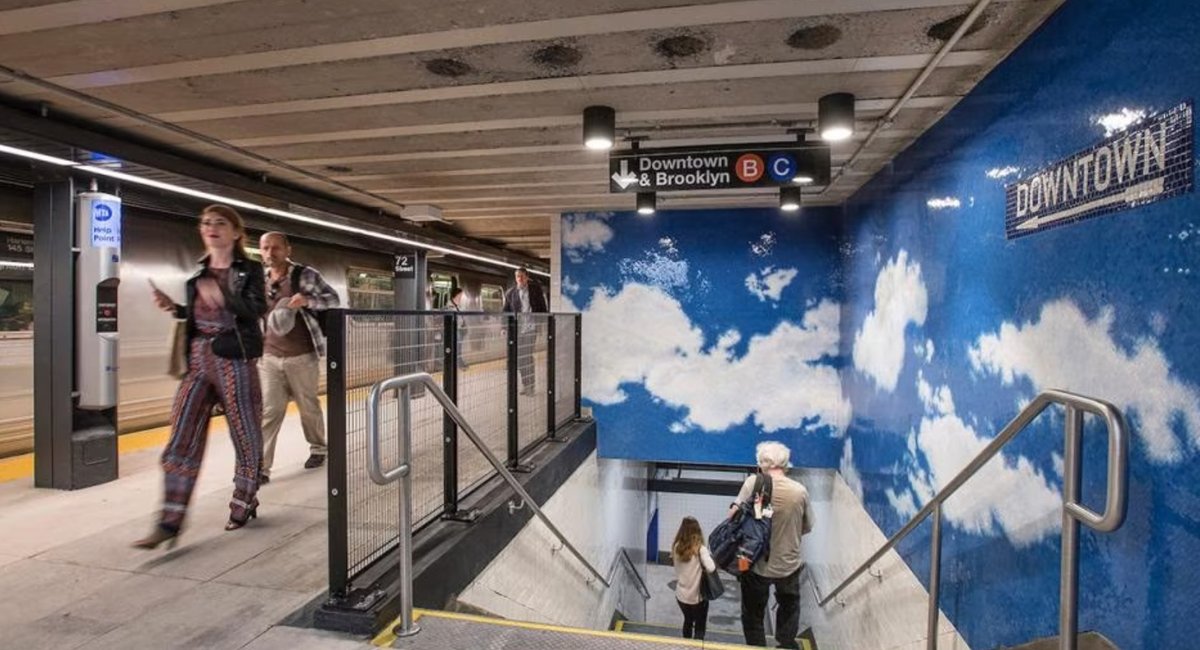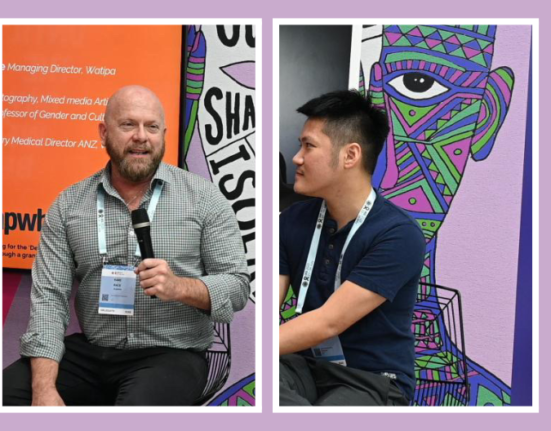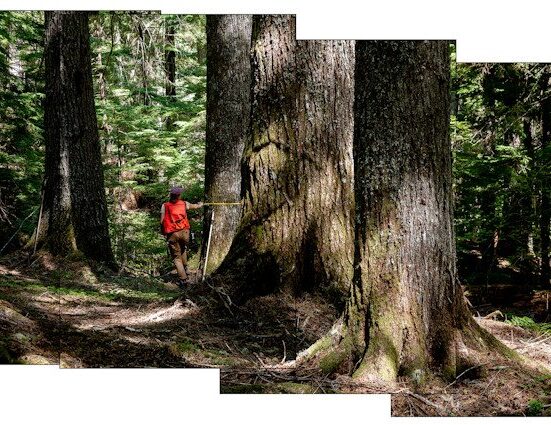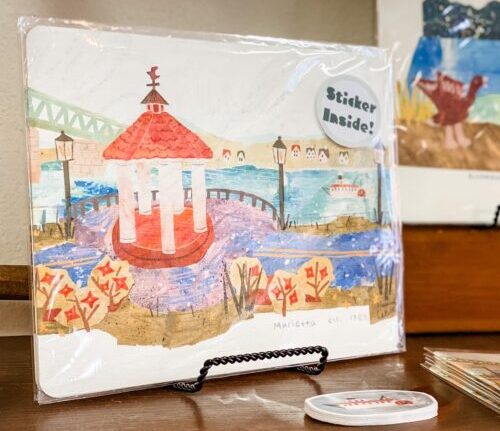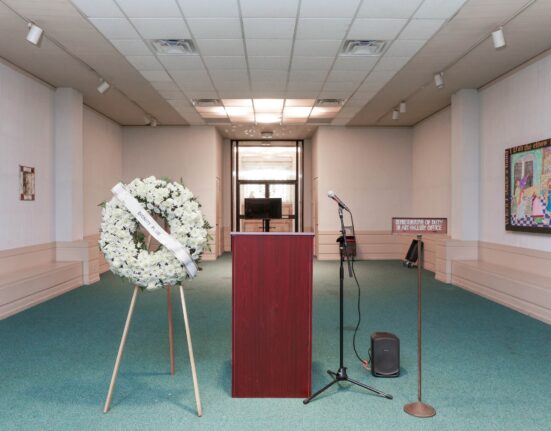Yoko Ono and Yayoi Kusama. Roy Lichtenstein and Chuck Close.
These artists all have work in the permanent collection of the Museum of Modern Art – and they’re also carried by another local collection, sometimes called New York’s “underground arts museum.”
The artists are among more than 400 who have been commissioned by MTA Arts & Design, which brings public art to subways, rail stations, buses and elsewhere throughout the transit system.
“SKY” by Yoko Ono
Photo by Patrick Cashin / Courtesy of the MTA
Many of the commissions are by local artists — the program posts regular calls for artists on the MTA website, and prioritizes those with a connection to the location where the art will be displayed.
“The one criteria we give is to create work that speaks to a place, that speaks to people who use that station and those who live in the surrounding area,” said Sandra Bloodworth, director of MTA Arts & Design.
Each commission comes with a $1,250 honorarium, while the costs of fabricating and installing the artwork are also covered.
And New Yorkers have former Mayor Ed Koch to thank for this largesse.
In 1982, the city passed the Percent for Art program, which requires that up to 1% of the budget for eligible city construction projects be devoted to public art.
This means that every time a subway station is renovated, or gets a new accessibility elevator, it generally gets art to go with it.
MTA Arts & Design was founded a few years later, in 1985. Among the earliest works it commissioned were the Milton Glaser mosaic at Astor Place and a Houston Conwill bronze at the 125th Street and Lexington Avenue station.
“The Open Secret” (1986) by Houston Conwill at 125 Street
Photo by Trent Reeves / Courtesy of the MTA
Bloodworth said the calls for new artworks are competitive and that the selection process is rigorous, with a pool of artists who are often from the neighborhood surrounding the project, as well as representatives directly hailing from the community.
The selection committee meets once to winnow the submissions down to a shortlist of about four artists.
The finalists are then subject to an orientation that explains the particulars of the program and the site.
“We present extensive information about the community, the history, the demographics – about ‘Who are you creating this work for?’” Bloodworth said.
The body of work created since MTA Arts & Design’s founding does include several blue chip names as well, from Sol Lewitt to William Wegman and Nick Cave.
“We don’t exclude someone because they’re successful,” Bloodworth said with a laugh.
“Each One, Every One, Equal All” (2021) by Nick Cave at Times Sq-42 St.
Photo by Trent Reeves Courtesy of the MTA
“You might come and visit New York and see artists in a museum,” Bloodworth said. “Then see some of the same artists’ work in the New York subway. Forty years ago, you couldn’t say that.”

